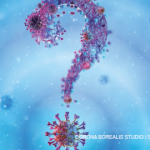When one of my classmates asked the dean for specific advice on how to approach the essay, she said, “Well, it depends on what you’re applying for. If you’re going into ortho, you’re going to write, ‘When I was in high school, I broke my leg playing football, and I met an orthopedic surgeon, who was the coolest guy ever, and I knew I had to become an orthopedic surgeon, too.’”
After the laughter subsided, the dean smirked and said, “You laugh, but it’s true.”
Sherlock Holmes, Rheumatologist?
As a program director, I can see the truth to those words. When you read a large number of applications for rheumatology fellowship, some common themes emerge. The most frequent is an anecdote regarding a patient with an autoimmune disease who inspired an early interest in rheumatology. A common variation on that theme is when the patient is a family member. And then, of course, are the legions of applicants who want to become a medical Sherlock Holmes.
In Chapter 6 of The Sign of the Four, Sherlock Holmes and Dr. James Watson are trying to divine how a perpetrator entered a locked room. When Dr. Watson fails to come up with a plausible explanation, Mr. Holmes famously replies: “How often have I said to you that when you have eliminated the impossible, what remains, however improbable, must be the truth?”3
Our profession seems to have become inextricably linked to this style of investigation. A Google search for the keywords “rheumatology” and “Sherlock Holmes” yields 194,000 hits, the majority of which likely lead to case reports of improbable diagnoses made by exclusion of all the other possible diagnoses.
It’s our own fault, really. I’ve written countless consult notes in which I made the obligatory statement that many rheumatic diseases are diagnoses of exclusion and should be considered seriously only after the other consult services have done their part to rule out more common possibilities. Where did the concept of diagnosis of exclusion come from, and is it time for it to go away?
Excluding Diagnoses
Apparently, it started in Vienna.
In 1365, Pope Clement VI gave Duke Rudolf IV of Austria permission to establish the University of Vienna, which included a medical school.4
For a few centuries, the medical school wasn’t particularly good.
This wasn’t their fault. The pinnacle of medical understanding at that time was based on the works of Galen, whose conception of medicine was based on humorism (i.e., the belief that illness was the result of an imbalance in one of the four humors: black bile, yellow bile, blood and phlegm). Throughout the English language, the persistence of such words as bilious, sanguine and phlegmatic serve as reminders of this school of thought.5 Anatomy, on the other hand, was a purely descriptive science. Through vivisection, Galen gained an understanding of the circulatory, respiratory and nervous systems, but never connected anatomy to the clinical manifestations of human disease.6


